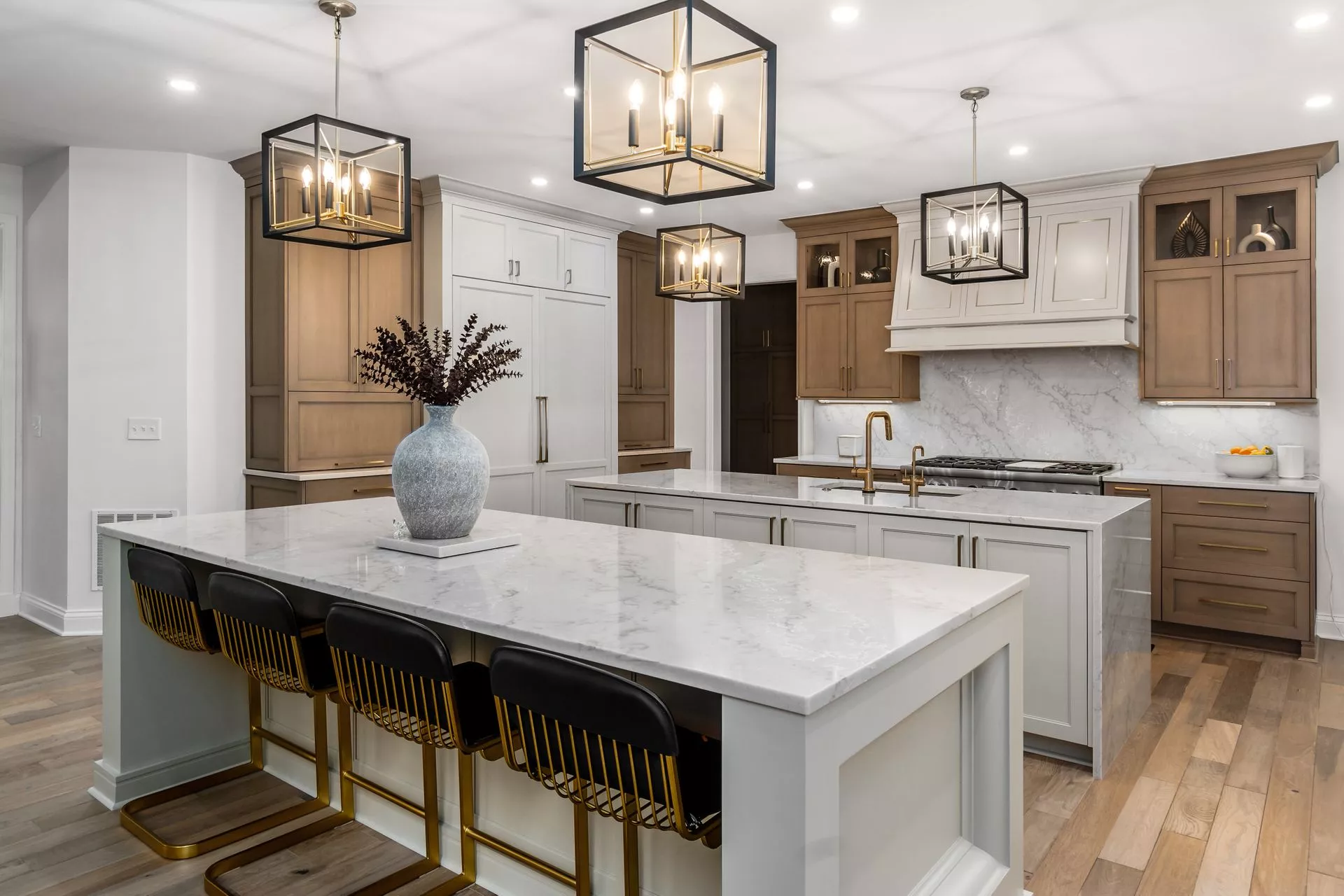
Aug 19
If you’ve ever flipped through a high-end design magazine and marveled at a kitchen or bathroom that felt effortlessly sophisticated, chances are the designer knew the secret to one of today’s most coveted trends: mixed metals.
Gone are the days of sticking to one finish across your entire space. Now, combining metals—when done well—creates depth, visual interest, and a curated, custom feel. But here’s the catch: done poorly, it can look disjointed and accidental.
Whether you’re a homeowner tackling a remodel or a designer creating your next showpiece, this guide will teach you how to mix metals in your kitchen or bath with intention, confidence, and style.
Metals bring texture, sheen, and contrast to a room. When you mix them, you create layers—just like pairing different fabrics in fashion. The right combination can:
The key is treating metals like part of your color scheme—not just a hardware decision.
When it comes to mixed metals, less really is more. The Rule of Three is a designer’s best friend:
This isn’t an arbitrary limit—it’s about visual clarity. Too many finishes create a scattered, “accidental” look.
Example: A kitchen with brushed nickel faucets, matte black cabinet pulls, and stainless steel appliances feels cohesive. Add in copper light fixtures, chrome trim, and brass accents, and suddenly the space feels chaotic.
The easiest way to make mixed metals work is to decide early on: What’s your base metal? What’s your accent metal?
Your base metal is the dominant finish in the space—about 60–70% of the metal elements should be in this tone.
Common base metals:
Your accent metal is the supporting role—it creates contrast and draws the eye to key details.
Popular accent metals:
Pairing Tip: Think in terms of temperature:
If you’re planning a remodel in 2025, these are the mixed metals making waves in both mixed metals kitchen and mixed metals bathroom designs:
These finishes are being used not just in hardware, but also in light fixtures, mirror frames, and even appliance trims.
Key mixed metal opportunities:
Example combo:
Base Metal: Brushed nickel (faucets, cabinet pulls)
Accent Metal: Aged brass (pendant lights, barstool legs)
Third Finish (optional): Stainless steel (appliances)
Pro Tip: Keep your base metal consistent across high-use elements—like all cabinet hardware—then use the accent metal for eye-level focal points.
Key mixed metal opportunities:
Example combo:
Base Metal: Matte black (faucet, shower fixtures)
Accent Metal: Champagne bronze (mirror frame, vanity pulls)
Pro Tip: In smaller bathrooms, stick to two finishes for a polished look. Use sheen variation (brushed vs. polished) for added interest without overwhelming.
Spread your chosen metals evenly through the space. If brass is your accent metal, repeat it at least three times—in lighting, hardware, and a decorative element—so it feels intentional.
In open-concept layouts, let one room influence the other. If your kitchen uses matte black + brushed nickel, carry those into your adjacent bathroom or dining space to maintain flow.
Mixing metals in your kitchen or bath isn’t about breaking the rules—it’s about knowing which rules to bend. Follow the Rule of Three, choose a base and accent metal, pay attention to temperature and sheen, and you’ll create a space that looks like it came straight from a designer’s portfolio.
Whether you’re leaning into 2025’s trending finishes like champagne bronze or sticking with timeless brushed nickel, the key is intention. Every faucet, handle, and fixture should feel like it belongs in the story your space is telling.
Kitchen Kraft’s design team can help you select and pair the perfect mixed metals for a kitchen or bath that’s both timeless and on-trend. From material selection to final installation, we’ll ensure your space reflects your style—down to the very last handle.
Schedule a complimentary consultation at our luxury remodeling showroom with one of our award-winning designers.